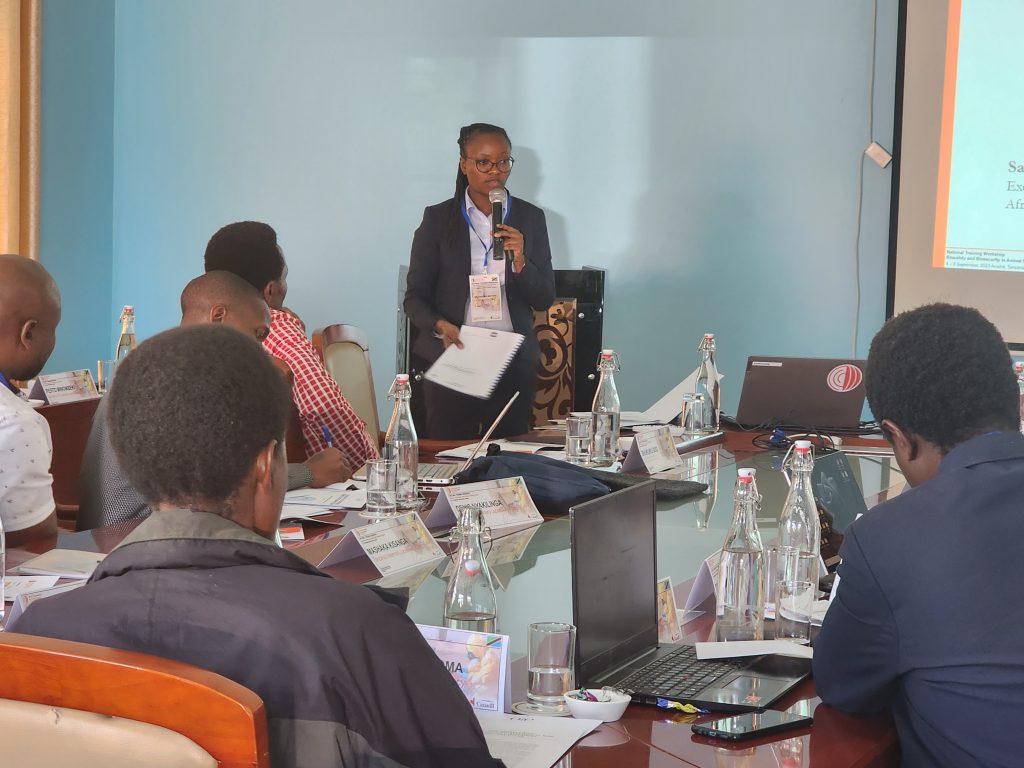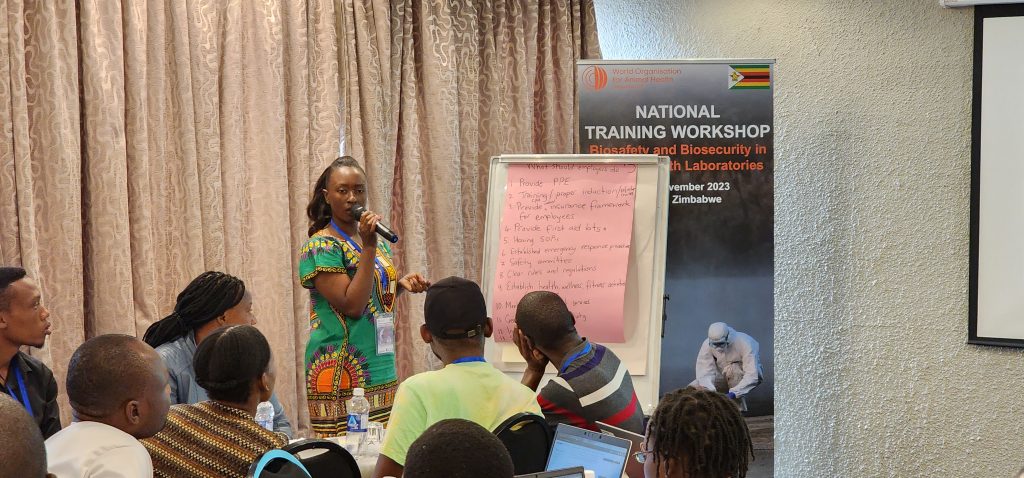Animal health emergencies are increasingly frequent and complex, requiring Veterinary Services and Aquatic Animal Health Services to respond effectively. An emergency can be considered as a serious, and often dangerous, situation requiring immediate action. Governments and the general public expect the animal health sector to manage any emergency impacting or involving animal health and welfare. Emergency management can be defined as the holistic organisation and management of resources and responsibilities to deal with all aspects of an emergency, including prevention and mitigation, detection, preparedness, response and recovery. It requires clear policies, contingency plans and procedures backed up by adequate resources, including trained personnel, and validated through simulation exercises. In contrast to the day-to-day work of Veterinary Services, emergency management necessitates timely, adaptable and effective interventions to reduce the impact of emergencies.
Emergencies can impact men and women differently, with women often undertaking key animal caregiving roles and managing administrative tasks; men are more likely to hold decision-making power and leadership responsibilities.
However, gender-centred perspectives in animal health emergency management are often overlooked and misunderstood, primarily due to a lack of data disaggregated by sex, as well as the general lack of women’s visibility in these activities. Inclusive strategies are essential for preparedness and response. This article presents gender-inclusive strategies to strengthen animal health systems, with a focus on empowering women.

Women play a crucial role in animal production worldwide, engaging in various activities that range from husbandry to product processing and marketing, particularly in small-scale production systems and rural communities [1]. Women undertake critical, yet often under-recognised, roles in managing animal health emergencies, from animal caregiving to administering treatments for animals. However, available data on the extent of women’s participation in these activities vary from country to country as well as from region to region, with research efforts dependent on prevailing social and cultural values [2]. In emergencies, women can substantially contribute to emergency response by encouraging their family members to follow disease control measures. They can disseminate early warning information, contribute to contingency plans, advocate for the necessary protection of women during emergencies, conduct needs assessments and support their families and communities [3].
Some studies have demonstrated how women’s lack of access to information on diseases and their management, as well as to appropriate training in animal health, can contribute negatively to safeguarding natural resources [1]. Most women lack access to and control over resources, training, and leadership roles. Access to these critical resources and services would improve the efficiency, profitability and sustainability of their engagement. In the process, women would be empowered to become active agents in emergency preparedness and response, and this would in turn uplift their lives and those of their families and communities [4]. Women who take decision-making roles in emergencies can create opportunities and spaces for other women to participate in decision-making. It is thus critical for organisations to invest in opportunities that build women’s leadership capacities [3].
Copyright: Ian Peter Busuulwa – WOAH
Designing and implementing strategies to address the unique challenges and contributions of men and women ensures equitable access to resources, training and decision-making processes during emergencies [5]. Developing gender-sensitive emergency response policies with early input from actors in the agriculture and aquaculture sectors ensures better risk assessments and stronger mitigation measures against disease outbreaks as well as other emergencies, such as those related to climate change [6].
Designing and implementing strategies to address the unique challenges and contributions of men and women ensures equitable access to resources, training and decision-making processes during emergencies.
Cultural norms often reinforce gender roles and stereotypes that hinder collective action in emergencies. For instance, men are less likely to seek mental health support during emergencies due to societal norms discouraging emotional expression and reaching out for help. Research also shows that whilst men and women are equally likely to share positive information, men are much less likely to want to share negative information, which further contributes to the stigma over how they may be perceived [7]. This reluctance can affect their ability to manage stress, affecting decision-making and response effectiveness. Gender-sensitive emergency response policies should include mental health support tailored to encourage men to seek assistance without stigma [8].

Copyright: Ian Peter Busuulwa – WOAH
Inclusive leadership enhances resilience
Animal health emergency management remains male-dominated, which limits diverse perspectives in decision-making. Gender-diverse leadership teams are better equipped to address the varied impacts of emergencies across different communities. However, women are often significantly under-represented in leadership roles. For example, in 2023 a WOAH study found that of its 182 Members at the time, only 21% of Delegates were women [9,10]. This trend mirrors the global situation in public health, where women represent 67.2% of the health workforce but hold only 25% of senior roles [11].
Barriers continue to limit women’s participation in decision-making roles, making it important to foster an enabling environment that goes beyond simply counting numbers of women in the room, to also ensure meaningful inclusion and influence in leadership. A WOAH-commissioned gender assessment of Veterinary Services in South East Asia in 2023 identified challenges to fostering such inclusion including beliefs that women cannot be strong leaders, cultural and religious norms favouring men in leadership roles, leadership roles that often demand longer hours and constant availability; the latter of which conflicts with societal expectations of women as caregivers. In addition, it noted increased scrutiny and pressure on female leaders to prove their competence in the eyes of men [12,13].
Veterinary Services and Aquatic Animal Health Services can work to overcome barriers to women obtaining leadership roles. Organisations can implement gender-sensitive recruitment strategies such as anonymising applications and arranging gender-balanced interview panels to reduce bias. In addition, setting targets for gender equity in leadership may also help, as would creating formal and informal networks for women’s leadership development, including mentorship programmes [11]. Furthermore, government policies should support parental leave for women while ensuring job security upon their return to leadership roles. Emergency management often involves long and demanding hours, and organisations should ensure that staff can maintain a work-life balance by offering flexible schedules and understanding that women often have care-giving responsibilities at home.
It should also be noted that integrating women’s leadership into emergency response requires more than just their presence on teams; it involves embedding gender expertise into the policy process to ensure meaningful commitment to addressing gendered risks and promoting equity [14]. This can include having gender advisors work with policymakers and conducting gender impact assessments in policy planning.
Inclusive leadership policies in emergency management will support countries and territories with fulfilling the requirements of the Sendai Framework for Disaster Risk Reduction (2015-2030) and the UN Sustainable Development Goal on Gender Equality, which both call for the participation of women in leadership and decision-making bodies [15,16].
A gender-equitable approach to capacity-building for emergency management ensures that women have equal access to capacity-building programmes and resources. Just as they address gender gaps in leadership, efforts must go beyond merely increasing female participation in capacity-building and to create an environment where women can engage whilst still being able to balance their work-home responsibilities effectively. This can include offering remote or hybrid learning opportunities, childcare grants, access to carers for vulnerable adults and flexible training plans. Additionally, involving women as trainers and experts enhances their empowerment. Countries with high female representation in Veterinary Services, such as Malaysia, have seen positive results from policies that offer flexible working conditions, subsidised childcare and extended parental leave (in Malaysia, 98 days for women and seven days for men) [12,17].
Capacity-building can also include developing gender-specific trainings to educate all participants on challenges and best practices for promoting gender equity in emergency management.
Integrating gender into emergency management: key recommendations
Women are not yet fully visible and recognised for their work in animal health emergencies, so they are not adequately considered in the formulation of emergency management policies. It is essential that men play a role in working with women to foster a gender-inclusive environment.
Key recommendations include:
- collecting data on women’s roles in emergency response to provide evidence for the development of policies;
- developing gender-sensitive policies that consider cultural and social contexts;
- promoting inclusive leadership by addressing the barriers that impact women;
- ensuring equitable access for women to capacity building opportunities.
Integrating gender into emergency management is both necessary and achievable. By adopting a holistic and inclusive approach, Veterinary Services and Aquatic Animal Health Services can create more resilient and effective emergency management systems that benefit entire communities.
Cover image Copyright: Ian Peter Busuulwa – WOAH
https://doi.org/10.20506/woah.3613
References
[1] Food and Agriculture Organization of the United Nations (FAO). La situación de las mujeres en los sistemas agroalimentarios – panorama general. Rome (Italy): FAO; 2023. 16 p. https://doi.org/10.4060/cc5060es
[2] Williams MJ, Chao NH, Choo PS, Matics K, Nandeesha MC, Shariff M, et al., eds. Global Symposium on Women in Fisheries – Sixth Asian Fisheries Forum, 29 November 2001, Kaohsiung, Taiwan. Penang (Malaysia): WorldFish; 2002. 209 p. https://hdl.handle.net/20.500.12348/2235
[3] Cocchiglia M. Women’s leadership in risk-resilient development: good practices and lessons learned. Geneva (Switzerland): United Nations Office for Disaster Risk Reduction; 2015. 96 p. Available at: https://www.undrr.org/quick/11406 (accessed on 2 February 2025).
[4] Cataldo C, Bellenghi M, Masella R, Busani L. One Health challenges and actions: integration of gender considerations to reduce risks at the human-animal-environmental interface. One Health. 2023;16:100530. https://doi.org/10.1016/j.onehlt.2023.100530
[5] Tanner L, Markek D, Komuhangi C. Women’s leadership in disaster preparedness. London (United Kingdom): Action Against Hunger; 2018. 36 p. Available at: https://www.preventionweb.net/quick/47274 (accessed on 2 February 2025).
[6] Gallardo Lagno A, Aguilar-Manjarrez J, Norambuena Cleveland R, Mienert Rauna A, Ivanovic Willumsen C. Caracterización de la pesca y la acuicultura artesanal en pequeña escala en América del Sur y recomendaciones de políticas públicas. Santiago (Chile): Food and Agriculture Organization of the United Nations; 2023. 150 p. https://doi.org/10.4060/cc4612es
[7] Addis ME, Mahalik JR. Men, masculinity, and the contexts of help seeking. Am. Psychol. 2003;58(1):5-14. https://doi.org/10.1037/0003-066x.58.1.5
[8] Bayes Business School. Men less likely than women to share negative information, says study. London (United Kingdom): Bayes Business School; 2023. Available at: https://www.bayes.city.ac.uk/news-and-events/news/2023/november/men-less-likely-than-women-to-share-negative-information-says-study (accessed on 2 March 2025).
[9] World Organisation for Animal Health (WOAH). Gender. Paris (France): WOAH; 2024. Available at: https://rr-asia.woah.org/app/uploads/2024/06/00.-Gender-Presentations-CompiledPub.pdf (accessed on 7 March 2025).
[10] Fèvre S, Vezeau N. Women leaders in the veterinary profession. Paris (France): World Organisation for Animal Health; 2025. Available at: https://theanimalecho.woah.org/en/women-leaders-in-the-veterinary-profession/ (accessed on 28 February 2025).
[11] World Health Organization (WHO). Closing the leadership gap: gender equity and leadership in the global health and care workforce. Geneva (Switzerland): WHO; 2021. Available at: https://www.who.int/publications/i/item/9789240025905 (accessed on 3 February 2025).
[12] Kochkina O. Gender Assessment of Veterinary Services in South-East Asia. Paris (France): World Organisation for Animal Health; 2023. Available at: https://rr-asia.woah.org/app/uploads/2023/07/woah-gender-assessment-report.pdf (accessed on 3 February 2025).
[13] World Organisation for Animal Health (WOAH). Women are transforming veterinary medicine—but are they leading it? Paris (France): WOAH; 2025. Available at: https://www.linkedin.com/posts/worldanimalhealth_women-in-the-veterinary-workforce-activity-7295200706104373251-7roE?utm_source=share&utm_medium=member_ios (accessed on 7 March 2025).
[14] Carlin E, Standley CE, Hardy E, Donachie D, Brand T, Greve L, et al. Animal health emergencies: a gender-based analysis for planning and policy. Front. Vet. Sci. 2024;11:1350256. https://doi.org/10.3389/fvets.2024.1350256
[15] United Nations Office for Disaster Risk Reduction (UNDRR). UNDRR Annual Report 2022. Geneva (Switzerland): UNDRR; 2023. Available at: https://www.undrr.org/annual-report/2022 (accessed on 3 February 2025).
[16] United Nations (UN). Resolution adopted by the General Assembly on 25 September 2015. New York (United States of America): UN; 2015. Available at: https://docs.un.org/en/A/RES/70/1 (accessed on 3 February 2025).
[17] Rodzi NH. Maternity leave extension should draw Malaysian mums back to workforce, but some employers wary. Kuala Lumpur (Malaysia): The Straits Times; 2024. Available at: https://www.straitstimes.com/asia/se-asia/maternity-leave-extension-should-draw-malaysian-moms-back-to-workforce-but-some-employers-wary (accessed on 7 March 2025).








